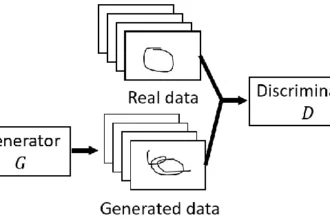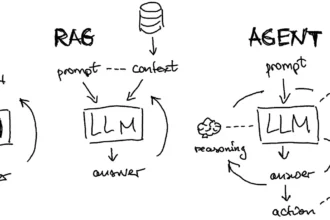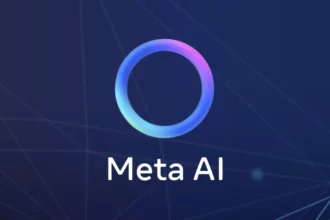Table of Contents
ToggleIs AI Cost Increasing or Decreasing?
The cost of AI is generally decreasing, driven by technological innovation and market competition, though short-term increases may occur due to rising computational demands and infrastructure needs. This trend shapes the accessibility and future potential of AI applications.
AI Cost Decreasing: Key Drivers
Competition plays a significant role in lowering AI costs. Companies, including open-source contributors like Meta, deliver models matching or exceeding GPT-4 performance at reduced costs. This competitive market leads to pricing pressure, benefitting consumers.
- Users now enjoy diverse choices of AI models, fostering price convergence around affordable levels.
- Hardware innovations, such as Amazon Inferentia chips, boost throughput by over 2x and cut inference costs by nearly 70% compared to traditional options.
- Software optimizations enable more efficient GPU use, further reducing operational expenses.
- Model efficiency improves continuously; smaller models deliver similar performance. Meta’s Llama 3 8B rivals Llama 2 70B, showing tenfold parameter reduction with equal or better results.
- Techniques like distillation and quantization compress models without major performance losses, making AI more practical and cheaper to run.
New AI architectures promise greater speed and efficiency, cutting compute power demands for equivalent intelligence. Apple exemplifies this shift by launching proprietary 3B parameter models running locally on devices, reducing reliance on cloud costs and delivering privacy and speed benefits.
Local AI execution lowers costs profoundly, as running models on personal devices avoids cloud inference fees. This trend points to near-zero marginal AI usage costs for common tasks.
Historical data shows a dramatic price reduction: OpenAI’s GPT-4 equivalent intelligence cost dropped 240 times in 18 months, from $180 per million tokens to under $1. Continued progress suggests the cost curve will keep falling.
Factors Behind Cost Decreases
| Factor | Description | Impact on Cost |
|---|---|---|
| Hardware innovation | ASICs like Amazon Inferentia enhance throughput and efficiency. | Up to 70% lower inference costs. |
| Software optimization | Better GPU use and new software layers reduce operational waste. | Lower running expenses. |
| Model efficiency improvements | Smaller, smarter models reduce compute without performance loss. | Lower computational demand. |
| Market competition | Diverse vendors and open-source models stimulate price competition. | Prices converge downward. |
| Local model deployment | Models run directly on devices reduce cloud reliance. | Marginal cost approaches zero for many tasks. |
Reasons AI Costs May Increase Temporarily
Despite downward trends, some factors can push AI costs up, especially in the short term:
- New AI models may demand higher inference computation, raising immediate costs.
- A survey from IBM indicates computing costs may rise by 89% by 2025, heavily influenced by generative AI adoption.
- High electricity consumption by AI servers increases energy expenses and infrastructure investment.
- Ensuring data privacy, security, and regulatory compliance raises operational costs.
- AI needs continuous updates and monitoring, which requires dedicated resources and adds ongoing expenditure.
- Cutting corners to reduce cost risks producing inaccurate or unreliable models, affecting trust and long-term viability.
Challenges in Managing AI Costs
AI’s environmental impact is significant due to power and water demands. Expanding infrastructure and sustainable energy sourcing are critical but costly. Companies must balance cost efficiency, sustainability, and performance standards.
Additional hidden expenses include safeguarding sensitive data, compliance with regulations like GDPR, and combating misuse risks such as deepfakes.
Future Outlook
If current technological and competitive trends persist, AI model costs will continue to decline sharply. The pricing may reach negligible levels, making AI widely affordable across industries and applications. This accessibility will catalyze innovation and unlock new functionalities that are currently cost-prohibitive.
Industry experts counsel startups and developers not to overly focus on immediate inference cost optimization, as these costs drop rapidly. Instead, they should explore creative use cases enabled by future low-cost AI availability.
Summary of Key Takeaways
- AI costs are decreasing overall due to hardware advances, software efficiencies, and market competition.
- Smaller models rival large ones, reducing computational and financial costs.
- Local device AI execution cuts cloud inference expenses toward zero.
- Temporary cost increases arise from newer, more complex models and rising energy demands.
- Data privacy and operational needs add hidden costs.
- Continued cost declines will enable widespread AI adoption and new applications.
- Focus innovation on future uses unlocked by low AI costs rather than current optimizations.
Is AI Cost Increasing or Decreasing? An In-Depth Look at Today’s AI Price Trends
If you’re wondering whether AI costs are rising or falling, the short answer is: AI costs are generally decreasing, thanks to fierce competition, technological advances, and smarter models. Despite some concerns about energy use and infrastructure, the overall trend points to a rapid decline in the cost of powering AI. But like every good story, it’s not that simple. Let’s unpack the details and explore what’s really happening behind the scenes in the world of AI expenses.
The question on everyone’s mind ain’t just “Is AI expensive?” but rather “Is AI getting more or less expensive over time?” The answer depends on many factors: innovation, market forces, energy demands, and new tech breakthroughs. Pull up a chair, this is going to be enlightening!
Competition: The Great AI Cost Cutter
One of the biggest forces driving AI costs down is competition. It’s like a pricing tug-of-war between companies trying to win your AI dollars.
- More companies are entering the AI arena. Big names like Meta offer open-source models that compete right alongside giants like OpenAI’s GPT-4, effectively pushing prices lower.
- Users benefit because they have choices—whether that’s cheaper providers or different models offering similar quality.
- When OpenAI released its more demanding o1-preview model, costs spiked a bit, but history shows that other models soon catch up — and we get cheaper offerings again.
We’re seeing a convergence in prices as providers compete to offer the best bang for your AI buck. Think of it as the “AI cost war”—only you win, not the companies.
Hardware and Infrastructure: Smarter Chips, Lower Bills
While competition stokes pricing battles, the real magic happens in hardware and infrastructure.
- Innovative chips like Amazon’s Inferentia promise to significantly slash costs by boosting throughput and energy efficiency.
- Amazon claims Inferentia offers up to 2.3 times higher throughput and up to 70% lower cost per inference compared to traditional CPUs in Amazon EC2 setups.
- New players like Groq are joining the fun with specialized AI accelerators, pushing GPU use further and driving down unit costs.
- As companies better utilize GPUs and scale infrastructure, inference — the actual running of AI models — becomes cheaper.
With both hardware and software optimizations, running AI isn’t just faster; it’s cheaper, meaning these savings often reach the customer.
Smaller but Smarter: The Rise of Compact AI Models
If you thought bigger AI equals better AI, think again. The trend leans hard into smaller, more efficient models.
- Meta’s Llama 3 8B, with just a fraction of parameters compared to last year’s bulky Llama 2 70B, matches or beats performance—showing size isn’t everything.
- Techniques like distillation and quantization help create these nimble models while preserving power.
- Llama 3.1 405B’s license even encourages developers to use its outputs for training improved models, further pushing innovation.
This proves compact models can punch well above their weight in power, reducing computational needs and thus lowering costs.
New Architectures: Changing the AI Game
Beyond tweaking existing models, innovative new AI architectures offer another path to cost reduction.
- Emerging model types like state space models pose a real challenge to the transformer’s dominance, delivering equal or better performance with fewer resources.
- Companies such as Cartesialare leading the charge, showing that AI can be both fast and efficient.
- The “Mamba” class models outperform similarly sized transformers while requiring less compute.
These innovations hint at a future where AI models don’t just get smaller—they get fundamentally cheaper to run.
On-Device AI: The Cost-Reducer You Didn’t See Coming
While cloud computing remains dominant, AI is increasingly moving closer to where the action is—the user’s device.
- Apple’s new 3B parameter models run locally on laptops and phones, meaning fewer queries to the cloud.
- On-device AI cuts latency and boosts privacy, but it also slashes cost because AI operations shift away from expensive data centers.
- Companies like Ollama let users run sophisticated models like Llama 3-8B right on their laptops.
Eventually, with more powerful chips and smarter, smaller models, many day-to-day AI tasks will run at effectively zero cost on personal devices.
How Big Is the Cost Drop? Looking at Numbers and Trends
Let’s crunch some numbers. Data shows that the cost per million tokens for GPT-4-style intelligence has dropped 240 times in the last 18 months—from $180 to less than $1.
This staggering decline results from improvements in hardware, software, competition, and model efficiency.
Companies and developers are seizing opportunities to build AI into more products as cost barriers fall. It’s a virtuous cycle: cheaper AI drives more application, which drives more investment into cost cutting.
Sounds All Great, but Are There Any Costs Going Up?
Of course, not everything is going downhill on the cost front. Some hidden and rising expenses deserve mention.
- AI’s hunger for electricity is no joke. Reports indicate compute costs might rise by nearly 90% between 2023 and 2025, driven largely by generative AI’s energy demands.
- Expanding power grids, energy sourcing, and sustainability efforts add infrastructure costs to the bill.
- Plus, data privacy, security, and constant updates elevate operational investments. Securing sensitive information and keeping AI accurate are pricey tasks.
- Careful cost-cutting is essential — too much focus on cheap AI might compromise quality and trust.
- Finally, the broader ecosystem faces ethical and regulatory hurdles that could increase costs or slow deployment.
So, while inference gets cheaper, these other costs may rise or create a balancing act for businesses.
What Does This Mean for You, the AI User or Builder?
If you’re building AI-powered solutions, here’s some pragmatic advice:
- Don’t sweat inference costs too much right now unless it’s eating your budget alive. These costs are falling fast.
- Focus instead on innovating with use cases that become viable as AI costs drop to a tenth or even a hundredth of today’s prices. The next big idea might ride this trend.
- If you’re working on lowering these costs—through hardware, software, or novel architectures—you’re contributing to a massive industry shift. Reach out; collaborators, customers, and investors are waiting.
How Competition, Tech, and Market Forces Combine to Shape the AI Cost Story
Remember, AI cost dynamics don’t exist in a vacuum. It’s a complex dance of:
- Market competition driving prices down and fueling innovation.
- Technological leaps in hardware and software efficiency.
- Energy infrastructure and sustainability requirements adding subtle pressures.
- New architectures and on-device AI rewriting how and where AI operates.
- Diverse players, from deep-pocketed giants to scrappy startups and dedicated open-source communities.
This multifaceted interplay explains why some reports say “AI cost is dropping dramatically,” while others warn “compute expenses are on the rise.” Both are true, depending on which part of the AI value chain you look at.
Applications & Industries Benefiting from Lower AI Costs
What’s the big deal about cheaper AI? It means industries and individuals get access to AI’s powers like never before.
- Healthcare is already transforming diagnostics and treatments using AI, making advanced care more accessible.
- Retail giants and even smaller competitors optimize customer experience and operations using personalized AI tools.
- In finance, AI enhances fraud detection and credit assessments, broadening financial inclusion.
- Emerging markets benefit as AI becomes affordable enough to integrate, expanding economic opportunities globally.
The reduced cost barrier accelerates mass adoption, expanding AI’s reach and impact.
Is AI Going to Be as Cheap as a Google Search?
Looking ahead, the trajectory suggests AI’s cost could approach near-zero for many use cases—akin to how cheap when you ‘Google’ something.
This future relies on:
- Continued hardware advancements and energy infrastructure improvements.
- New efficient model designs and smarter deployment strategies such as on-device AI.
- Further market competition and open innovation driving prices down.
Imagine AI as accessible and instant as searching the web. That reality is closer than most assume.
Final Takeaway: The Cost Question Isn’t Just About Dollars
If it feels like AI’s expense story is complicated, you’re right. While inference costs are falling, other associated costs and risks need attention. Energy consumption, security, model quality, ethics, and sustainability all affect the total picture.
But for newcomers and veterans alike, the overriding message is a positive one: AI is becoming more affordable and accessible, opening a world of opportunities at ever-lower prices. The trend is your friend here, so gear up for innovation and growth!
What new AI-powered product or service could you build when your AI bill slides closer to zero? The next revolution is probably just around that corner.
Feel inspired yet? Now’s a great time to jump into the AI cost story and either ride the wave or help steer it.
Is the cost of AI increasing or decreasing over time?
The cost of AI is decreasing overall. Despite occasional price bumps due to newer, more complex models, competition and technological advances drive prices downward.
What factors contribute most to the declining cost of AI?
- Hardware improvements like specialized chips reduce expenses.
- Smaller, smarter models perform well with fewer resources.
- New efficient model architectures require less compute power.
- On-device inference cuts cloud processing costs to near zero.
Do newer, more advanced AI models raise costs significantly?
New advanced models may temporarily raise inference costs. However, competing models soon match performance and drive prices down again.
How does on-device AI affect the cost trend?
Running AI on devices like phones lowers costs by eliminating cloud fees. It also improves privacy and reduces latency, making AI more affordable and accessible.
Should businesses worry about rising AI inference costs now?
Generally no. Costs are dropping rapidly, so over-optimizing early can limit innovation. Focus instead on exploring new use cases unlocked by cheaper AI.





